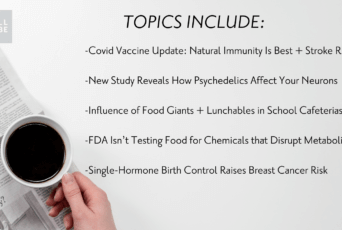RELATED CONTENT

How Elissa Goodman Said No to Chemo In Favor Of Natural Cancer Treatment — And Healed
Elissa Goodman is now a holistic nutritionist and author of the book Cancer Hacks, but her life used to look very, very different. In her twenties and early 30’s she ...

Adrienne’s 20-Year Journey with Chronic Neck and Jaw Pain and Moderate Scoliosis
For more than 20 years of my life, I’ve dealt with moderate scoliosis, back issues, and chronic neck and jaw pain, and I want to share my story with you. ...

The WellBe Health Research & Wellness News Wrap-Up: April 2023
Welcome to the first health research and wellness news wrap-up of 2023! In it, we cover all the most important pieces of health research and wellness news since our 2022 ...






COMMENTS